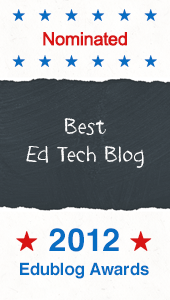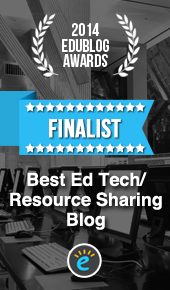Benefits of Using Google Slides with Little Learners
Google Presentation Slides have a handful of built in supports to make it easy for students to research, create and publish without leaving the page, so it is well suited for working with young students with little or no experience creating on a computer. The integrated research tool was useful for teaching students to begin to learn to search without yielding an overwhelming amount of results to sift through. The built in image search helped students easily find and insert images labeled for reuse, and it allowed me to introduce copyright to them. This is a concept I will continue to build on as we work together in the future. Best of all, the sharing feature allowed us to work collaboratively to build one slide show, which set an attainable goal for these little ones.
Learn Through Constructive Play
To avoid the pitfalls of total chaos and to keep some of the focus on the content, I decided to encourage these young students to engage in some constructive play and problem solving before they started their own slides. I created a nonsense slide right in front of them and challenged them to fix it, take it apart and add something new to the slide. As I quickly assembled the slide in front of students, I demonstrated how to search for an image, taught them about using "handles" to edit and modify content, and showed them how to scroll over the icons in the menu bar to learn more about their functions. I didn't expect students to learn how to do these things by watching a demo, I wanted to show them what was possible and model some of the thinking required to accomplish tasks. Here is what the first slide looked like.
Challenge: Can you help me fix my slide?
Think About Questions
On the second day, I set the tone for students to get help with the obstacles they would face when creating their own slide. To maximize instructional time, my goal was to keep them working instead of waiting for me to come around to help them solve their problem. To make the most of the time we had together I taught them how to ask specific questions to identify their problem, as an alternative to "I need help!" After all, it is this type of thinking that will ultimately help students become tech savvy and independent. Those of us who are good at solving our own tech problems know how to search for the answers.
Next, I taught them to use the Comments feature in Google Docs to get the questions off of their minds so they could move on and get something accomplished while waiting for help. I've learned that students with raised hands waiting for help accomplish little or nothing, and I wanted to avoid that familiar scenario.
Next, I taught them to use the Comments feature in Google Docs to get the questions off of their minds so they could move on and get something accomplished while waiting for help. I've learned that students with raised hands waiting for help accomplish little or nothing, and I wanted to avoid that familiar scenario.
Set Attainable Goals
After this exercise in constructive play it was time to let each student create a slide of their own within our collaborative presentation. I created a blank slide for each student and asked them to write a question about bears. We spent the next few days learning. They learned to use the research tool to find answers, they learned to think about "search" to find appropriate information and images, they learned to problem-solve, and they learned to use comments for feedback and help.
Develop and Share Expertice
Students developed their own areas of expertise and helped each other throughout our short time together. One student became our images expert and another learned to use the Define Tool to replace boring words with more descriptive terms. They corrected their spelling, struggled with dragging things around through the use of a trackpad, and they learned to use the cropping tool to magically transform the shape of their images. The students took pride in their work, and most of all, they had fun!
Focus on the Learning Instead of the End Product
This short project met the instructional goals I set and we ended up with a very basic and imperfect slideshow about bears. The goal of this project was not focused on the end product and we were not trying to impress anyone. The work we did together was focused on empowering students and helping them acquire the thinking skills necessary for creating and sharing information in a digital environment. I'd say this project was a success!


















3 comments
I recently went back to college after 10 years working dead end jobs. Allen School of Health Sciences online for Medical Billing & Coding was the awesome I learned so much just from taking notes off slides as a matter of fact it helped me tremendously. I'm a hands on learner but the slides and discussions make you push yourself to learn so much more. It sounds like a big success so fortunate for the kids to have such a wonderful teacher that uses skills taught in College to educate our 7th graders
ReplyWow! I loved reading this. Easy to follow steps for teachers. I can't wait to share this on G+ with my K-5th grade teachers. Yes, LITTLE hands can use technology too!
ReplyThis is such a great approach for young students - and not so young ones, too! Thank you for sharing.
Reply